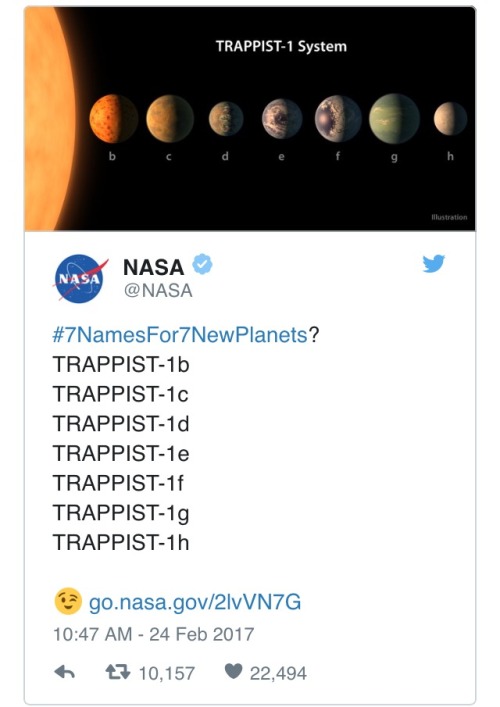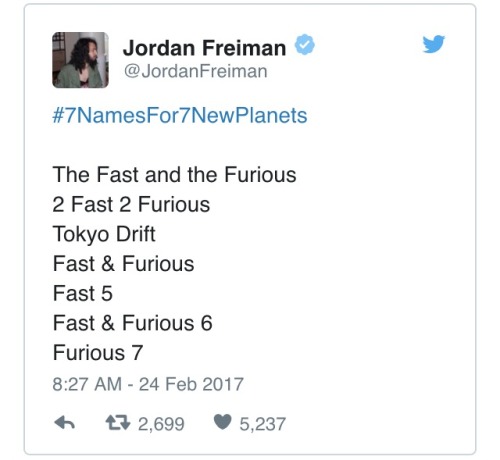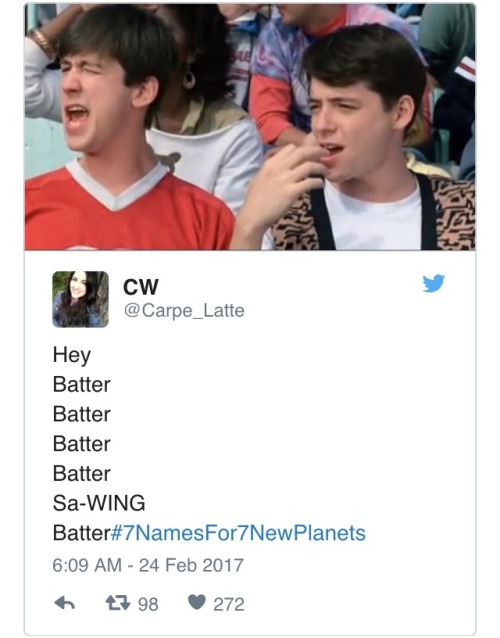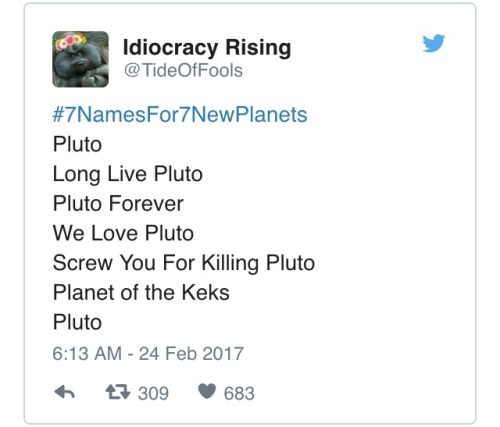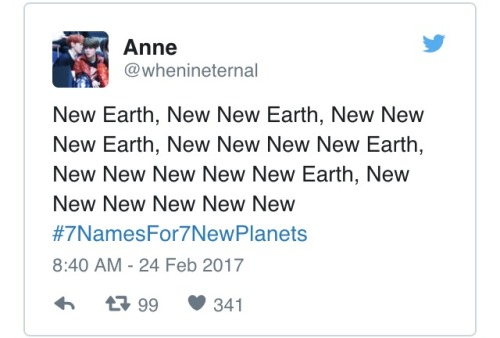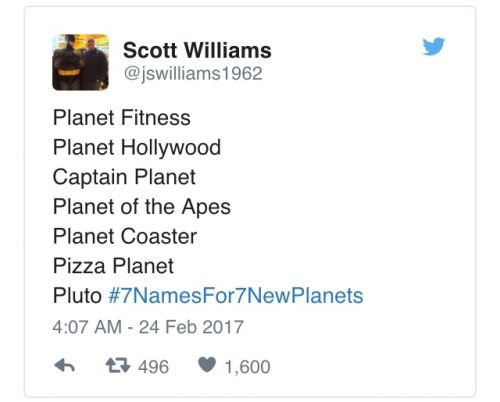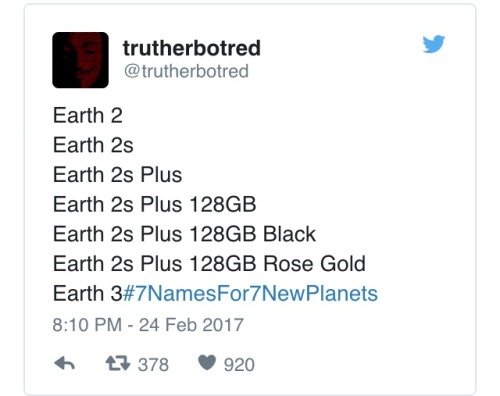Five Famous Pulsars From The Past 50 Years
Five Famous Pulsars from the Past 50 Years
Early astronomers faced an obstacle: their technology. These great minds only had access to telescopes that revealed celestial bodies shining in visible light. Later, with the development of new detectors, scientists opened their eyes to other types of light like radio waves and X-rays. They realized cosmic objects look very different when viewed in these additional wavelengths. Pulsars — rapidly spinning stellar corpses that appear to pulse at us — are a perfect example.

The first pulsar was observed 50 years ago on August 6, 1967, using radio waves, but since then we have studied them in nearly all wavelengths of light, including X-rays and gamma rays.
Typical Pulsar
Most pulsars form when a star — between 8 and 20 times the mass of our sun — runs out of fuel and its core collapses into a super dense and compact object: a neutron star.

These neutron stars are about the size of a city and can rotate slowly or quite quickly, spinning anywhere from once every few hours to hundreds of times per second. As they whirl, they emit beams of light that appear to blink at us from space.
First Pulsar
One day five decades ago, a graduate student at the University of Cambridge, England, named Jocelyn Bell was poring over the data from her radio telescope - 120 meters of paper recordings.

Image Credit: Sumit Sijher
She noticed some unusual markings, which she called “scruff,” indicating a mysterious object (simulated above) that flashed without fail every 1.33730 seconds. This was the very first pulsar discovered, known today as PSR B1919+21.
Best Known Pulsar
Before long, we realized pulsars were far more complicated than first meets the eye — they produce many kinds of light, not only radio waves. Take our galaxy’s Crab Nebula, just 6,500 light years away and somewhat of a local celebrity. It formed after a supernova explosion, which crushed the parent star’s core into a neutron star.

The resulting pulsar, nestled inside the nebula that resulted from the supernova explosion, is among the most well-studied objects in our cosmos. It’s pictured above in X-ray light, but it shines across almost the entire electromagnetic spectrum, from radio waves to gamma rays.
Brightest Gamma-ray Pulsar
Speaking of gamma rays, in 2015 our Fermi Gamma-ray Space Telescope discovered the first pulsar beyond our own galaxy capable of producing such high-energy emissions.

Located in the Tarantula Nebula 163,000 light-years away, PSR J0540-6919 gleams nearly 20 times brighter in gamma-rays than the pulsar embedded in the Crab Nebula.
Dual Personality Pulsar
No two pulsars are exactly alike, and in 2013 an especially fast-spinning one had an identity crisis. A fleet of orbiting X-ray telescopes, including our Swift and Chandra observatories, caught IGR J18245-2452 as it alternated between generating X-rays and radio waves.

Scientists suspect these radical changes could be due to the rise and fall of gas streaming onto the pulsar from its companion star.
Transformer Pulsar
This just goes to show that pulsars are easily influenced by their surroundings. That same year, our Fermi Gamma Ray Space Telescope uncovered another pulsar, PSR J1023+0038, in the act of a major transformation — also under the influence of its nearby companion star.

The radio beacon disappeared and the pulsar brightened fivefold in gamma rays, as if someone had flipped a switch to increase the energy of the system.
NICER Mission
Our Neutron star Interior Composition Explorer (NICER) mission, launched this past June, will study pulsars like those above using X-ray measurements.

With NICER’s help, scientists will be able to gaze even deeper into the cores of these dense and mysterious entities.
For more information about NICER, visit https://www.nasa.gov/nicer
Make sure to follow us on Tumblr for your regular dose of space: http://nasa.tumblr.com
More Posts from Fillthevoid-with-space and Others

Did you know that some observatories are not on the ground and not orbiting Earth, but are mounted on airplanes? I finally researched SOFIA, an infrared observatory in a repurposed plane, and discovered there’s a rich history of airborne astronomy. And by airborne astronomy, I mean a lot of people took pictures of astronomical phenomena from planes!
Below the cut, I have the glossary, transcript, sources, and music credits. If you have suggestions for topics I could cover, please send me a Tumblr message or tweet at me on Twitter at @HDandtheVoid, or you can ask me to my face if you know me. Please subscribe on iTunes, rate my podcast and maybe review it, and tell friends if you think they’d like to hear it!
(My thoughts on the next episode are Chuck Yeager, Stephen Hawking and his theories, the opposition of Mars, famous comets, recent developments and discoveries in the astronomer community, or an atmospheric phenomenon called ‘Steve.’ The next episode will go up April 30th, lord willing and the creek don’t rise!)
Glossary
absorption bands - the areas of the electromagnetic spectrum that are absorbed by atmospheric gases.
atmospheric windows - the areas of the electromagnetic spectrum where the atmosphere is transparent, or does not absorb the radiation of specific wavelengths.
corona - the hot outer atmosphere of the Sun.
electromagnetic spectrum - the range of wavelengths or frequencies over which electromagnetic radiation extends. A photon transmits electromagnetic radiation at different frequencies, which are in a range that includes (from highest frequency to lowest) gamma rays, X-rays, ultraviolet light, visible light, infrared, microwaves, and radio waves
frequency - the number of times a wave oscillates up and down per second.
hypoxia - insufficient oxygen in the blood. Symptoms include vertigo, nausea, weakness, hyperventilation, slowed thinking, poor coordination, dimmed vision, and increased heart rate.
photon - a type of elementary particle that moves in a wave. It transmits electromagnetic radition such as light. The more energy a photon has, the higher its frequency.
Script/Transcript
Sources
A map of every active satellite orbiting Earth via Quartz
Infrared radiation via Gemini Observatory (Feb 1999)
Absorption Bands and Atmospheric Windows via NASA
Gladys Ingle of the 13 BLACK CATS changes planes in mid-air via YouTube
Milestones in Airborne Astronomy: From the 1920's to the Present by Wendy Whiting Dolci (1997)
Limits to human performance: elevated risks on high mountains, by Huey, Raymond B. and Xavier Eguskitza. Journal of Experimental Biology (2001)
When Humans Fly High by Linda Pendleton (Nov 1999)
Dalton's Law tells us that the total pressure of any mixture of gases (with constant temperature and volume) is the sum of the individual pressures (also called partial pressure) of each gas in the mixture. Also, partial pressure of each gas is proportional to that gas's percentage of the total mixture. Because the percentage of oxygen in the atmosphere remains constant at 21%, Dalton's Law lets us calculate the partial pressure of the oxygen in the atmosphere at any altitude. As we'll see shortly, the human body is affected by the pressure of the gases in the atmosphere. The partial pressure of oxygen (and to a lesser extent other gases) available in the surrounding air is important in determining the onset and severity of hypoxia.
Henry's Law states that the amount of gas dissolved in a solution is proportional to the partial pressure of the gas over the solution. A bottle of carbonated liquid demonstrates Henry's Law. When the bottle is uncapped, the carbon dioxide (CO2) in the mixture will slowly diffuse to the atmosphere until the pressure of CO2 in the liquid equals the pressure of CO2 in the surrounding air. The soda will then be "flat." A bottle of soda opened in an unpressurized aircraft at 10,000 feet will foam and overflow. The opposite will happen with soda opened at pressures greater than one atmosphere. A champagne cork won't pop in a diving bathysphere pressurized for deep ocean exploration.
Boyle's Law states that the volume of a gas is inversely proportional to the pressure on the gas as long as the temperature remains constant. A gas will expand when the pressure on it is decreased. This law holds true for all gases, even those trapped in body cavities. A volume of gas at sea level pressure will expand to approximately twice its original volume at 18,000 feet, nearly nine times its original volume at 50,000 feet.
Graham's Law tells us that a gas at higher pressure exerts a force toward a region of lower pressure. There's a permeable or semi-permeable membrane separating the gases, and gas will diffuse across the membrane from the higher pressure to the lower pressure. This will continue until the pressure of the gas is equal, or nearly equal, on both sides of the membrane. Graham's Law is true for all gases and each gas in a mixture behaves independently. It's possible to have two or more gases in a solution diffusing in opposite directions across the same membrane and, in fact, this is what happens to make oxygen transfer possible in the cells and tissues of the human body.
High-Altitude Hypoxia via Harvard (July 2012)
Kuiper Airborne Observatory via NASA (May 2005)
NASA's Kuiper Airborne Observatory via YouTube
SOFIA Science Center
Up all Night with SOFIA, NASA's Flying Observatory via YouTube
Intro Music: ‘Better Times Will Come’ by No Luck Club off their album Prosperity
Filler Music: ‘A Bite Out of My Bed’ by The New Pornographers off their album Together.
Outro Music: ‘Fields of Russia’ by Mutefish off their album On Draught
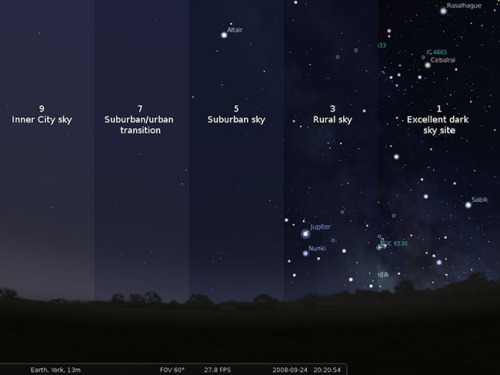
People think they know darkness, and that they experience darkness everyday, but they don’t, really.
Across the United States, natural darkness is an endangered resource. East of the Mississippi, it is already extinct; even in the West, night sky connoisseurs admit that it’s quicker to find true darkness by flying to Alice Springs, Australia, than traveling to anywhere in the lower forty-eight.
Ever since the nation’s first electric streetlight made its debut in Cleveland, on April 29, 1879, the American night has become steadily brighter. In his new book, The End of Night: Searching for Natural Darkness in an Age of Artificial Light, Paul Bogard aims to draw attention to the naturally dark night as a landscape in its own right — a separate, incredibly valuable environmental condition that we overlook and destroy at our own peril.
Read More.
What is so special about the solar eclipse to you??
Huh, that’s a very good question and I probably answer it differently each time I get asked it. I love the fact that in totality you can see the solar atmosphere and get a chance to see the magnetic field structure of the Sun. This is something that you can’t normally do. I also love the idea that we’re going to be able to test a bunch of ionospheric models with the help of citizen scientist! This again is a very unique opportunity! But probably the thing that seems so special about this particular eclipse is seeing how excited everyone is about it! Most days I sit in my office working on my science (which I think is the best science and most interesting thing in the world- but I’m probably biased about that) and not too many other people in the world are all that excited about it. But with the eclipse, I get to share how cool this science is, and it’s amazing to see everyone get involved!
NASA’s Hybrid Computer Enables Raven’s Autonomous Rendezvous Capability
ISS - International Space Station patch. March 21, 2017 A hybrid computing system developed at NASA’s Goddard Space Flight Center in Greenbelt, Maryland, is the enabling technology behind an ambitious experiment testing a relative navigation and autonomous docking capability known as Raven.
Image above: This panorama of the International Space Station was composed by piecing together images taken by Raven’s Visible Camera. These images were processed by a hybrid computing platform, SpaceCube 2.0. Image Credit: NASA. Developed by the Satellite Servicing Projects Division, or SSPD, the carry-on luggage-sized module was launched February 19 aboard SpaceX’s Dragon spacecraft, along with other experiments deployed outside the International Space Station on an experiment pallet. Raven is testing and maturing visible, infrared and lidar sensors and machine-vision algorithms; the module will bring NASA one step closer to realizing the groundbreaking autopilot capability that can be applied to many NASA missions for decades to come. Since NASA’s pre-Apollo days, the agency has successfully docked spacecraft while they speed through space. However, all operations involved humans who orchestrated the movements from the ground. Raven’s objective is to develop and mature technologies that ultimately will relieve human dependency and give spacecraft the ability to catch up with one another and dock autonomously in real time. “The Raven module is equipped with technology that lays the foundation for a relative navigation system,” said Goddard Director Christopher Scolese. “What some may not fully appreciate is the fact that Raven’s sensors could not do their job if it weren’t for another very effective technology called SpaceCube. The SpaceCube processor is the behind-the-scenes technology that is making this important demonstration possible.” SpaceCube is a reconfigurable, very fast flight computing platform that Goddard technologists first demonstrated during a relative navigation experiment on the Hubble Servicing Mission-4 in 2009. During the Raven experiment, the module’s “sensors serve as the eyes. SpaceCube acts as the brain, analyzing data and telling components what to do,” said Ben Reed, deputy division director of SSPD. The “eyes” and the “brain” together create the autopilot capability. Since its initial development, SpaceCube has evolved into a family of flight computers all distinguished by their computing speed, which is 10 to 100 times faster than the commonly used spaceflight processor — the RAD750. Though the RAD750 is immune to the adverse effects of radiation, it is slow and many generations behind the computing speed of commercial processors. SpaceCube processors achieve their data-crunching prowess because Goddard technologists married radiation-tolerant integrated circuits, which are programmed to execute specific computing jobs simultaneously, with algorithms that detect and fix radiation-induced upsets in collected data. Consequently, these hybrid systems are nearly as reliable as the RAD750, yet orders-of-magnitude faster, capable of executing complex computations once limited to ground-based systems.
Image above: This image shows the Defense Department’s experiment pallet, STP-H5, hanging at the end of Canada’s robotic arm during installation on the outside of the International Space Station. Image Credit: NASA. During its two-year stay on the space station, Raven will sense incoming and outgoing visiting space station spacecraft, feeding the data it “sees” to SpaceCube 2.0, one in the family of SpaceCube products. SpaceCube then runs a set of pose algorithms, or a set of instructions, to gauge the relative distance between Raven and the spacecraft it is tracking. Then, based on these calculations, SpaceCube 2.0 autonomously sends commands that swivel the Raven module on its gimbal or pointing system to keep the sensors trained on the vehicle, while continuing to track it. While all this is transpiring, NASA operators on the ground monitor Raven’s technologies, paying close attention to how they function as a system and making necessary adjustments to increase Raven’s tracking abilities. “Tracking spacecraft with this system is only possible because we have SpaceCube,” said SSPD Avionics Technology Lead and SpaceCube Lead Engineer David Petrick, who has won prestigious awards for his work on the processor. “This type of operation requires fast computing.” Raven’s foundational technologies will be applied to future missions. For example, Restore-L, which also will use SpaceCube 2.0, will rendezvous with, grasp, refuel and relocate Landsat 7 when it launches in 2020. SpaceCube 2.0, however, isn’t the only processor now at work on the space station’s external experiment pallet sponsored by the Department of Defense’s Space Technology Program. SpaceCube 1.0 is being used as the communication interface between the space station’s data services and multiple experiments on the pallet. In addition, a miniaturized version of SpaceCube 2.0 — the SpaceCube Mini — is operating two NASA and U.S. Defense Department experiments. NASA also is testing two other miniature computers, developed with the University of Florida. These models are mostly equipped with commercial parts. For other technology news, go to https://gsfctechnology.gsfc.nasa.gov/newsletter/Current.pdf Related links: Raven: https://sspd.gsfc.nasa.gov/Raven.html SpaceCube: https://spacecube.gsfc.nasa.gov/ Space Station Research and Technology: https://www.nasa.gov/mission_pages/station/research/index.html International Space Station (ISS): https://www.nasa.gov/mission_pages/station/main/index.html Images (mentioned), Text, Credits: NASA Goddard Space Flight Center/Lori Keesey/Lynn Jenner. Greetings, Orbiter.ch Full article
This is so sweet! What a nice way to spend a Saturday night.
Make Sure You Observe the Moon on October 20
On Saturday, October 20, NASA will host the ninth annual International Observe the Moon Night. One day each year, everyone on Earth is invited to observe and learn about the Moon together, and to celebrate the cultural and personal connections we all have with our nearest celestial neighbor.
There are a number of ways to celebrate. You can attend an event, host your own, or just look up! Here are 10 of our favorite ways to observe the Moon:
1. Look up

Image credit: NASA’s Scientific Visualization Studio/Ernie Wright
The simplest way to observe the Moon is simply to look up. The Moon is the brightest object in our night sky, the second brightest in our daytime sky and can be seen from all around the world — from the remote and dark Atacama Desert in Chile to the brightly lit streets of Tokyo. On October 20, the near side of the Moon, or the side facing Earth, will be about 80 percent illuminated, rising in the early evening.
See the Moon phase on October 20 or any other day of the year!
2. Peer through a telescope or binoculars

The Moon and Venus are great targets for binoculars. Image Credit: NASA/Bill Dunford
With some magnification help, you will be able to focus in on specific features on the Moon, like the Sea of Tranquility or the bright Copernicus Crater. Download our Moon maps for some guided observing on Saturday.
3. Photograph the Moon

Image credit: NASA/GSFC/ASU
Our Lunar Reconnaissance Orbiter (LRO) has taken more than 20 million images of the Moon, mapping it in stunning detail. You can see featured, captioned images on LRO’s camera website, like the one of Montes Carpatus seen here. And, of course, you can take your own photos from Earth. Check out our tips on photographing the Moon!
4. Take a virtual field trip

Image credit: NASA/JPL-Caltech
Plan a lunar hike with Moontrek. Moontrek is an interactive Moon map made using NASA data from our lunar spacecraft. Fly anywhere you’d like on the Moon, calculate the distance or the elevation of a mountain to plan your lunar hike, or layer attributes of the lunar surface and temperature. If you have a virtual reality headset, you can experience Moontrek in 3D.
5. Touch the topography

Image credit: NASA GSFC/Jacob Richardson
Observe the Moon through touch! If you have access to a 3D printer, you can peruse our library of 3D models and lunar landscapes. This model of the Apollo 11 landing site created by NASA scientist Jacob Richardson, is derived from LRO’s topographic data. Near the center, you can actually feel a tiny dot where astronauts Neil Armstrong and Buzz Aldrin left the Lunar Descent Module.
6. Make Moon art

Image credit: LPI/Andy Shaner
Enjoy artwork of the Moon and create your own! For messy fun, lunar crater paintings demonstrate how the lunar surface changes due to consistent meteorite impacts.
7. Relax on your couch

Image credit: NASA’s Scientific Visualization Studio/Ernie Wright
There are many movies that feature our nearest neighbor, from A Voyage to the Moon by George Melies, to Apollo 13, to the newly released First Man. You can also spend your evening with our lunar playlist on YouTube or this video gallery, learning about the Moon’s role in eclipses, looking at the Moon phases from the far side, and seeing the latest science portrayed in super high resolution. You’ll impress all of your friends with your knowledge of supermoons.
8. Listen to the Moon
Video credit: NASA’s Scientific Visualization Studio/Ernie Wright
Make a playlist of Moon songs. For inspiration, check out this list of lunar tunes. We also recommend LRO’s official music video, The Moon and More, featuring Javier Colon, season 1 winner of NBC’s “The Voice.” Or you can just watch this video featuring “Clair de Lune,” by French composer Claude Debussy, over and over.
9. See the Moon through the eyes of a spacecraft

Image credit: NASA/GSFC/MIT
Visible light is just one tool that we use to explore our universe. Our spacecraft contain many different types of instruments to analyze the Moon’s composition and environment. Review the Moon’s gravity field with data from the GRAIL spacecraft or decipher the maze of this slope map from the laser altimeter onboard LRO. This collection from LRO features images of the Moon’s temperature and topography. You can learn more about our different missions to explore the Moon here.
10. Continue your observations throughout the year

Image credit: NASA’s Scientific Visualization Studio/Ernie Wright
An important part of observing the Moon is to see how it changes over time. International Observe the Moon Night is the perfect time to start a Moon journal. See how the shape of the Moon changes over the course of a month, and keep track of where and what time it rises and sets. Observe the Moon all year long with these tools and techniques!
However you choose to celebrate International Observe the Moon Night, we want to hear about it! Register your participation and share your experiences on social media with #ObserveTheMoon or on our Facebook page. Happy observing!
Make sure to follow us on Tumblr for your regular dose of space: http://nasa.tumblr.com.

We’re back in 2019 with an episode that would have been more appropriate to release during hurricane season: a discussion of the Coriolis force! This force was observed centuries ago but takes its name from the scientist who first considered it in terms of theory and physics. It has an impact on a vast range of natural phenomena, from weather patterns to ocean waves to the flights of flies and moths.
Below the cut are the glossary, transcript, a timeline of the people I mention, sources, and music credits. Send me any topic suggestions via Tumblr message (you don’t need an account to do this, just submit as anonymous). You can also tweet at me on Twitter at @HDandtheVoid, or you can ask me to my face if you know me in real life. Subscribe on iTunes to get the new episodes of my so-far-monthly-updated podcast, and please please please rate and review it. Go ahead and tell friends if you think they’d like to hear it, too!
(My thoughts on the next episode are Stephen Hawking, Hedy Lamarr, or famous comets. The next episode will go up in late February.)
Glossary
Coriolis force - a force in a rotating system that acts perpendicular to the direction of motion and to the axis of rotation. On Earth, this tends to deflect moving objects to the right in the Northern Hemisphere and to the left in the Southern Hemisphere.
Ekman transport - the net motion of fluid that results from the balance between Coriolis and turbulent drag forces.
Eötvös effect - the change in perceived gravitational force that results from eastbound or westbound movement on Earth’s surface.
Kelvin waves - an ocean wave that is trapped at the Earth’s equator and along vertical boundaries like coastlines. They move towards the equator when they have a western boundary; towards the poles when they have an eastern boundary; and make a whirlpool when they have a closed boundary, moving counterclockwise in the Northern Hemisphere and clockwise in the Southern Hemisphere.
Lagrange points - five points where three bodies can orbit each other, yet stay in the same position relative to each other in a stable configuration. L1-L3 are in line with each other, while L4 and L5 are at the points of equilateral triangles in the configuration.
prograde - when a planet spins from east to west.
Rossby number - used to determine the relative importance of the centrifugal and Coriolis forces in maps of weather patterns. A small Rossby number indicates that a weather system is strongly affected by Coriolis forces, while a large Rossby number signifies that a system is affected by inertial and centrifugal forces.
Transcript
Timeline
Giovanni Battista Riccioli, Italian (1598-1671)
Francesco Maria Grimaldi, Italian (1618-63)
Joseph-Louis Lagrange, French (1736-1813)
Gaspard-Gustave de Coriolis, French (1792-1843)
Sir William Thompson, AKA Lord Kelvin, Scots-Irish (1824-1907)
Baron Loránd Eötvös de Vásárosnamény, Hungarian (1848-1919)
Ottokar Tumlirz, Austrian (1856-1928)
Fridtjof Nansen, Norwegian (1861-1930)
Vagn Walfrid Ekman, Swedish (1874-1954)
Carl-Gustaf Arvid Rossby, Swedish-born American (1898-1957)
Sources
Coriolis Effect via the University of Oregon
Coriolis Force via Wikipedia
Coriolis effect, two centuries before Coriolis via Physics Today (Aug 2011)
Gaspard-Gustave de Coriolis via Wikipedia
Coriolis effect via National Geographic
Hurricane, cyclone, typhoon, tornado – what’s the difference? via African Reporter (Sep 2017)
Wang, B. Kelvin Waves. University of Hawaii: Honolulu, 2002.
Ocean in Motion: Ekman Transport Background via NASA
Ekman transport via Wikipedia
What is a Geodesist? via Environmental Science
“The Second Coming” by W. B. Yeats via Poetry Foundation
Intro Music: ‘Better Times Will Come’ by No Luck Club off their album Prosperity
Filler Music: ‘Ambergris’ by Tipper off their EP Fathoms
Outro Music: ‘Fields of Russia’ by Mutefish off their album On Draught
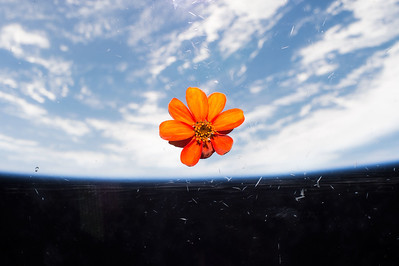
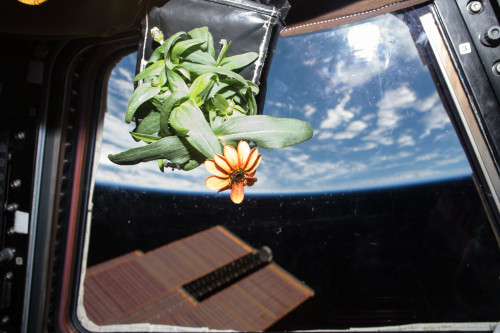

Take a moment, look outside your window. 🌷🌼
Today is the #FirstDayOfSpring in the Northern Hemisphere, also known as the vernal equinox.
#DYK Earth’s tilted axis causes the season? Throughout the year, different parts of Earth receive the Sun’s most direct rays. So, when the North Pole tilts toward the Sun, it’s summer in the Northern Hemisphere. And when the South Pole tilts toward the Sun, it’s winter in the Northern Hemisphere.
These images are of Zinnias. They are part of the flowering crop experiment that began aboard the International Space Station on Nov. 16, 2015, when NASA astronaut Kjell Lindgren activated the Veggie system and its rooting “pillows” containing zinnia seeds.
Make sure to follow us on Tumblr for your regular dose of space: http://nasa.tumblr.com.
I found a bizarre open-access, peer-review journal of STEM research. It was hard for me to find anything that pertained to astronomy or any of the stellar studies, but I did find a couple categories I could investigate:
Astrobiology
Astronomical Sciences
Spectroscopy (I didn’t see any astronomical spectroscopy stuff but who knows)
Just looking at the articles popping up suggests that it would take some serious digging to find anything (and I would certainly have to work on my keyword optimization techniques because typing ‘space’ into the search bar got me nothing relevant to my interests), but it’s a new potential resource! And for anyone who wants to find a way to publish in STEM fields, maybe it’s something worth checking out?
-
 forwhomtheduccquacks liked this · 7 months ago
forwhomtheduccquacks liked this · 7 months ago -
 blissyroe liked this · 8 months ago
blissyroe liked this · 8 months ago -
 uss-constitution-constellation liked this · 1 year ago
uss-constitution-constellation liked this · 1 year ago -
 kidwithgoggles reblogged this · 2 years ago
kidwithgoggles reblogged this · 2 years ago -
 irlusa reblogged this · 2 years ago
irlusa reblogged this · 2 years ago -
 irlusa liked this · 2 years ago
irlusa liked this · 2 years ago -
 miglasmeitene liked this · 2 years ago
miglasmeitene liked this · 2 years ago -
 naughtbutstars liked this · 3 years ago
naughtbutstars liked this · 3 years ago -
 stochasticism liked this · 3 years ago
stochasticism liked this · 3 years ago -
 theriseandriseof liked this · 3 years ago
theriseandriseof liked this · 3 years ago -
 a-shower-of-roses reblogged this · 3 years ago
a-shower-of-roses reblogged this · 3 years ago -
 alanshemper reblogged this · 4 years ago
alanshemper reblogged this · 4 years ago -
 alanshemper liked this · 4 years ago
alanshemper liked this · 4 years ago -
 cantuiakuq8 liked this · 4 years ago
cantuiakuq8 liked this · 4 years ago -
 saeminentodor65zkc liked this · 4 years ago
saeminentodor65zkc liked this · 4 years ago -
 asshoules reblogged this · 4 years ago
asshoules reblogged this · 4 years ago -
 asshoules liked this · 4 years ago
asshoules liked this · 4 years ago -
 fridgeraidertm reblogged this · 4 years ago
fridgeraidertm reblogged this · 4 years ago -
 fridgeraidertm liked this · 4 years ago
fridgeraidertm liked this · 4 years ago -
 v-m-smith reblogged this · 4 years ago
v-m-smith reblogged this · 4 years ago
A podcast project to fill the space in my heart and my time that used to be filled with academic research. In 2018, that space gets filled with... MORE SPACE! Cheerfully researched, painstakingly edited, informal as hell, definitely worth everyone's time.
243 posts
